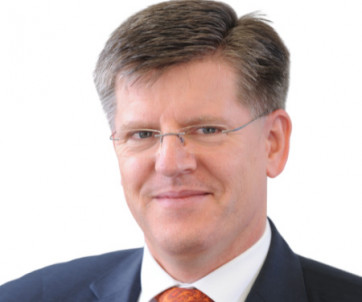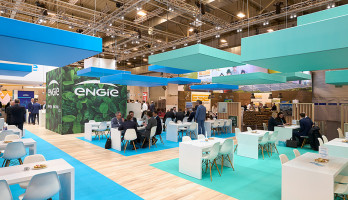
Digitalization of construction projects – BIM method as a building block for sustainability over the entire life cycle
The construction of new buildings is a complex undertaking. The number of building regulations alone is in the four-digit range. The building energy law, which entered into force in November 2020, is intended to simplify the energy regulations, but does not change the construction processes. The many parties involved in construction – from the client to the planners and executing companies to the subsequent users and approval authorities – require and generate endless amounts of data and information. How much easier collaboration would be if every actor could access the same data in real time and constantly update it - for all to see. This is exactly where the Building Information Modeling (BIM) comes in. The comprehensive digitization of all building information relevant to planning and implementation in a virtual building model brings not only more transparency and efficiency in the construction phase. The use of the BIM method already at the beginning during 3D planning enables the later operation of the building to be optimized.
Building Information Modeling: First digital, then real
This is the future: A new building can be viewed virtually in the finished state before the first brick is set. All changes in the planning are made by mouse click. The BIM method is designed to make this a reality. Building data modeling is used to create the building digitally. For this purpose, all the data relevant for the construction are integrated into the planning, and the participating actors all access the same synchronized data base, the common data environment (CDE). Particularly practical: In addition to the three-dimensional building model, all properties in terms of technology, materials and building physics and costs for a comprehensive view of the building are stored here. Later operations are also considered before the start of construction and are geared towards efficiency.
Double benefit through BIM: Increase efficiency and reduce costs during construction and operation
The step towards digitalization in the construction industry is overdue. The introduction of the BIM method will make projects in the future more cost-effective, more efficient and faster in processing. Particularly exciting for ENGIE as a TGA and energy service provider: The model data can also be used to simulate the energy efficiency of the building in a proactive manner and to calculate various variants.
Working with the BIM method: The first step is always the hardest
While many European countries – such as Scandinavia, Italy, the UK and Spain – already have a BIM obligation, only individual projects have been implemented in Germany. A 2019 study by the Düsseldorf-based market research institute BauInfoConsult on the use of BIM in the construction sector shows that the new technology is used on average at one tenth of the project volume in Germany. Even though few complete BIM projects have been put out to tender so far, most companies are already preparing to implement the BIM process in the coming years. This is also due to the fact that the BIM method has been mandatory in Germany since December 31, 2020 for all public infrastructure projects, i.e. for new roads, railways, airports and infrastructure construction.
This must be taken into account when switching to BIM processes
The changeover to BIM involves a considerable financial and time effort. New tools, skills and processes need to replace many of the established workflows and processes. The prerequisite for the smooth participation in a BIM project are efficient software solutions and open interfaces. In addition, employees must be trained in the change process and new key positions must be filled. A uniform language is also decisive for building information modeling: Terms must be used and defined equally by all partners involved; uniform standards for the exchange of data are also required. Questions about the sovereignty of the data, their security and access rights must also be clarified. Last but not least, the entire design of the contract must be revised.
The BIM method as a building block on the road to climate neutrality
There is no going back on the way to the BIM method. Digitalization will help the construction industry to increase efficiency over a long period of time. Buildings represent around 40% of annual CO2 emissions – this is where sustainability is of high importance. This applies to the planning and construction process as well as to subsequent operation. Exact and transparent planning improves work efficiency in the construction phase, saving resources and reducing error rates and reworking. With the help of an accurate recording of all products used in the construction, a life cycle assessment of the building is possible in the future, from project development, planning, construction and use, to the dismantling and disposal of the components. With little effort, the gray energy for the production of the materials can be determined and the consequences of the products used on the sustainability and the energy requirement can be taken into account at an early stage.
Gaining experience with the BIM method step by step
It is crucial for the success of a BIM project to clearly define the objectives in advance. Clients should take a close look at the operational phase early in the planning process and prepare a detailed client information request. The ENGIE Group has been working on BIM projects in various countries for five years, including Spain and the Netherlands, and has gained valuable experience in this field.
For us, building information modeling is not just a 3D planning of buildings. We look at planning through the eyes of the TGA service provider and at subsequent operation through the eyes of the facility manager.
Promoting the digitalization of the construction sector with BIM
Currently, the decision to work with the BIM method still requires a bit of pioneering spirit. But right now is also a good time to gain initial experience, build up internal know-how and work on the conversion of internal processes. We provide our clients who decide to work partially or completely with the BIM method for a project with comprehensive consultation right from the start of the project:
- on the issues to be resolved,
- the definition of specifications for the model requirements and the BIM use cases
- and provide them with a BIM execution plan for joint projects.
We are convinced that we will be able to handle construction projects in a significantly more efficient and sustainable way in the future if we understand and implement BIM as a constructive form of partnership and cooperation between all project participants.
Our Expert










